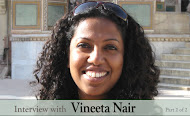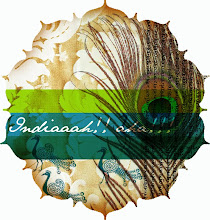Padmanabhapuram Palace - Part 1
Wednesday, June 10, 2015
Austere aesthetics, minimalism, monochrome, are normally not words one would associate with a palace. That too an Indian palace. And yet the Padmanabhapuram Palace of Travancore near Trivandrum, is a testimony to these very qualities. Wide swathes of latticed wood, throw patterened shadows on dark flooring polished to resemble inky pools. Apart from the paintings displayed in one hall of the entire palace, you will be hard put to find a spot of colour in this palace. Austerity would seem a hall mark of the Keralite aesthetic - a state whose traditional garment is offwhite and gold. In advertising it is a well known fact that you never test market a new product in Kerala. Because when the rest of India zigs - this Indian state zags.
Padmanabhapuram Palace was the centre of power for 300 years and ruling palace of Travancore (or Thiruvithamkur) located in Kanyakumari district, which now is part of the Tamil Nadu state, but is still maintained by the Government of Kerala Archaeology Dept, and is one of the finest existing examples of traditional Keralite Architechture. Generations of kings/queens ruled from this poetry in wood, and yet somehow it is the intensely talented, powerful and shortlived Swathi Thirunal Maharajavu (he built the Kuthira Malika) who comes to mind when I think of Kerala's kings, (though he never quite lived in this palace) and ofcourse much earlier than him, the fabled and much revered Marthanda Varma who renovated and made expansions to the original structure.
An important science which Kerala developed purely indigenously is Thachu-Shastram (Science of Carpentry). The concept of Thachi underlines that as timber is derived from a living form, the wood, when used for construction, has its own life which must be synthesized in harmony with its surroundings and people whom dwell inside it. Legend has it that traditionally before a tree was cut to use its wood, the Perumthachan (the master carpenter) would take the permission of the tree. And the indication that the tree was now ready and willing to be cut and used was that all the birds and animal forms residing on it would leave it. The longevity and the quality of the wooden structures made from wood derived thus is what we see in the palaces and the historical architecture in Kerala.
The Poomukham is the main entrance area where the guests of the royal family would be entertained.
The Kuthira (horse) vilakku with its adjusted centre of gravity is a famous part of the Poomukham
The most distinctive visual form of Kerala architecture is the long, steep sloping roof built to protect the house’s walls and to withstand the heavy monsoon, normally laid with tiles
Gable windows were evolved at the two ends to provide attic ventilation when ceiling was incorporated for the room spaces.
One of the special architectural features of this palace is the highly polished black mirror like floor made from lime, burnt coconut shells. whites of eggs, water from tender coconuts, sand laterite and juices of various herbs.

Mantra Shaala or the Kings Council Chamber
Mantra Shaala or the King’s Council chamber is the most beautiful part of the entire palace complex. It has windows, with coloured mica, which keep the heat and the dust away, and the interior of the council chamber remains cool and dark.
What intrigued me are these chairs - such restraint and balance in design - it almost looks contemporary. One tends to make the mistake of thinking of all traditional design as being overly ornate - every part of this palace will make you question such assumption.
Charupadi a special feature in Keralite Architechture. is the wooden bench with curved wooden slats for resting the back along the windows or verandahs.
In the Mantra Shaala. artistically slanted and curved wooden beams join the wall to the ceiling
The wooden ceiling in the Mantra Shaala is inset with recessed squares, each carved with 90 different varieties of flowers.
Talking of ceilings, one's mind boggles at the intricacy and math that hold these beautifully carved and perfectly aligned wooden beams in perfect symmetry.
At the Southwest end is the 'Thai Kottaaram" - Mother's Palace, which houses the 'Ekantha Mandapam', which translates to 'Chamber of Solitude", here a single pillar carved out of the jackfruit tree - so wide is the girth of the pillar that it almost halves its height - this was the 1st pillar to be built on the premises.
Leaving you a with a few carved beauties. It will take one more post for me to wrap up the silent and imposing Padmanabhapuram Palace. A palace singular in its strength, quiet dignity and grace. Speaking for the Kings and queens who made it what it is.

















































4 comments